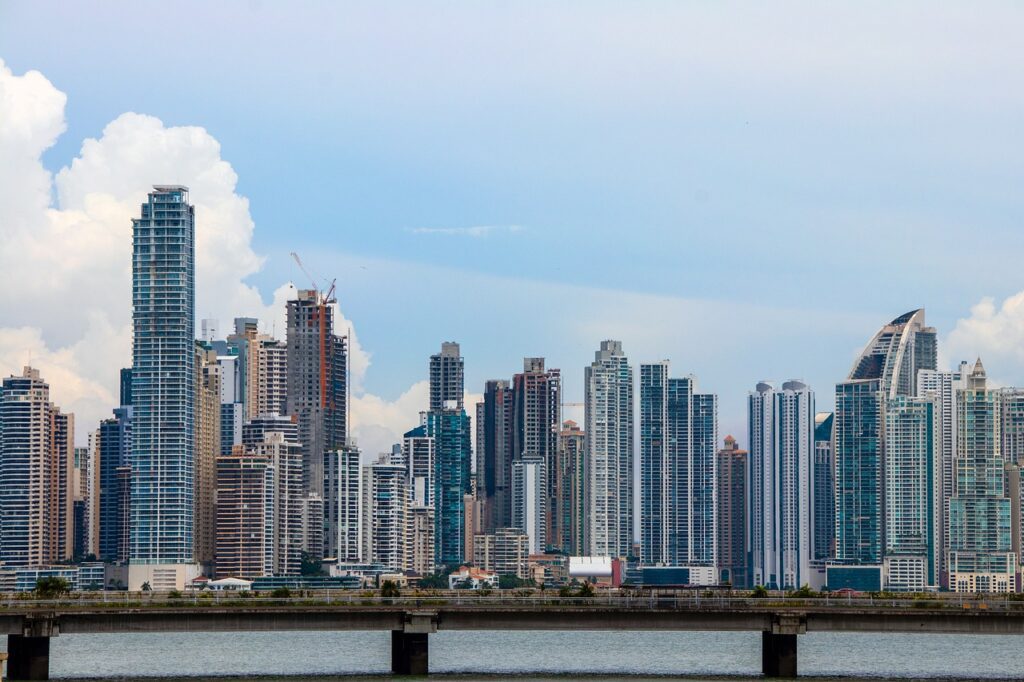Panama emerged as the most productive country in the Latin America/Caribbean region over the past two decades.
Although the country has a very positive reputation among global investors, new data adds to its credentials. What does it mean, however, for the dynamics of the nearshore market?
The data: Panama was identified as the most productive country (as in, the greatest generator of US dollars per hours worked) among its Latin American and Caribbean peers, according to a recent report by the Economic Commission for Latin America and the Caribbean (ECLAC).
Panama’s productivity in 2024 averaged US$45 per hour worked. The second most productive country (Uruguay) followed far behind, with US$31 per hour worked.
Panama also saw the largest productivity leap (151%) between 2005 and 2024.
The rest: Costa Rica, the Dominican Republic and Uruguay were among the top performers for the period too, with 50%+ jumps in productivity.
Moderate performers include Paraguay (49%), Bolivia (48%), Colombia (46%), Cuba (42%) and Chile (35%).
Venezuela and Jamaica stood at the bottom of ECLAC’s ranking with 52% and 14% drops in productivity, respectively.
The other countries in the lower end of the ranking achieved relatively poor growth: Honduras (5%), Ecuador (5%), Mexico (11%), El Salvador (15%), Argentina (15%), Brasil (17%), Trinidad & Tobago (18%) and Guatemala (23%)
A popular place: “[Panama] benefited from very strong investment flows and an expansive cycle of its construction industry [in the 2005-2024 period]”, ECLAC points out in its report..
The right moves: Panama has been able to remain popular among foreign investors thanks to appealing tax incentives, special economic zones and infrastructure projects meant to improve trade flows.
Currently, 15 active free trade zones exist in Panama. Seven more are being built.
The country plans to build a “Dry Canal” and a fourth bridge over the Panama Canal. It also plans to expand its metro system.
The job done has been so good that the country’s capital (Panama City) has been compared to Miami.
Doing well: From an economic standpoint, Panama has been one of the best performers in the region.
Its GDP jumped 7.3% in 2023, its biggest leap since 2016. Following a 17.1% collapse in 2020, Panama’s economy grew 15.8% and 10.8% in 2021 and 2022, respectively.
ECLAC expects Panama to grow 3% in 2024. For the whole LATAM/Caribbean region, its forecast sees 2.1%. For the region comprising Central America and Mexico, ECLAC expects 2.7% growth.
The gap: The strong performances by Panama and other top countries underscore what ECLAC described as “notable heterogeneity among countries in the region.”
In 2005, the higher-earning countries in the region saw a productivity of US$25 per hour worked, on average. Productivity for mid-to-low range earners was of US$5.
By 2024, productivity averaged US$34.4 and US$6.5 respectively for both groups.
ECLAC’s report also underlines noticeable productivity gaps among sectors and between companies depending on their size.
A better plan: “The region needs to align incentives and profitability signals in a manner that directs investments towards economic activities that could take advantage of greater tech and market dynamism,” ECLAC’s report states.
NSAM’s take: Panama’s positioning as the most productive country in the LATAM/Caribbean region underscores the benefits of a sound investment promotion strategy. Panamanian authorities have done a good job propping-up the country’s positives, allowing it to punch above its weight, at least when it comes to productivity. With a population barely above 4 million –smaller than some mid-tier cities in the region– and a GDP that doesn’t even crack the regional top 10, Panama is doing pretty well.
Panama hasn’t been able to translate high productivity into a solid nearshore reputation, however. The country still lags behind regional top dogs like Mexico, Costa Rica, Brazil and Colombia.
Nearshore investors still favor locations with certain “natural advantages” (large populations, very close proximity to the US and a wealth of exploitable natural resources) and benefits related to economic performance and development (a variety of location options for sourcing, well-established manufacturing and services sectors, a robust talent pool, a well-connected academic ecosystem).
While it is difficult for Panama to compete directly with Mexico, Brazil, Colombia and Argentina due to their natural advantages, perhaps it could follow the Costa Rican model. Costa Rica is, pound for pound, the best-performing country in the region when it comes to nearshore investment. It has been able to build very solid credentials in the global business community due to its premiere investment promotion game and long history of support to its services and manufacturing sectors.
Panama has a strong basis of tax incentives, real estate, infrastructure and investment promotion initiatives. It only needs to refocus those perks onto other sectors besides tourism and logistics.
Source link : http://www.bing.com/news/apiclick.aspx?ref=FexRss&aid=&tid=66eb27c7dd3e4c6c95681e1963c27f24&url=https%3A%2F%2Fnearshoreamericas.com%2Fbreakdown-panama-the-most-productive-country-in-latin-america%2F&c=537386460249513306&mkt=en-us
Author :
Publish date : 2024-09-18 08:14:00
Copyright for syndicated content belongs to the linked Source.
